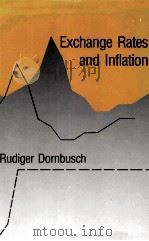《Railroads Rates-Service-Management》
| 作者 | 编者 |
|---|---|
| 出版 | The Macmillan Company |
| 参考页数 | 488 |
| 出版时间 | 1923(求助前请核对) 目录预览 |
| ISBN号 | 无 — 求助条款 |
| PDF编号 | 812546818(仅供预览,未存储实际文件) |
| 求助格式 | 扫描PDF(若分多册发行,每次仅能受理1册) |

PART ⅠTHE SCOPE AND MACHINERY OF REGULATION1
CHAPTER Ⅰ THE SUBJECT MATTER OF REGULATION:RATES,SERVICE,MANAGEMENT3
Section 1.Regulation and agricultural depression3
Sec.2.State commissions5
Sec.3.Rates and charges7
Sec.4.Service and management9
Sec.5.Management and profits12
Sec.6.State and interstate regulations13
CHAPTER ⅡTHE AGENCIES OF REGULATION14
Section 1.Commission regulation14
Sec.2.State commissions and the Interstate Commerce Commission15
Sec.3.The Shreveport Case16
Sec.4.The organization of the Interstate Commerce Commission18
Sec.5.Personnel of the Commission19
Sec.6.Divisional organization21
Sec.7.Bureau organization24
CHAPTER ⅢPRACTICE BEFORE COMMISSIONS28
Section 1.The administrative body28
Sec.2.Informality of procedure29
Sec.3.Classes of controversies,formal and informal complaints31
Sec.4.Rules of procedure33
Sec.5.Machinery of procedure35
Sec.6.General investigations and ex parte hearings37
CHAPTER ⅣTHE COMMISSIONS AND THE COURTS41
Section 1.The function of the court in regulation41
Sec.2.Defined powers of commissions42
Sec.3.The Abilene Case44
Sec.4.Constitutionality of state laws45
Sec.5.The confiscation doctrine46
Sec.6.State and Federal powers47
Sec.7.The review of orders51
Sec.8.The enforcement of orders52
Sec.9.Reparation under the Interstate Commerce Act52
PART ⅡRATES57
CHAPTER ⅤTHE RATE MAKING POWER59
Section 1.Competitive rate making59
Sec.2.The Commission's rate making power59
Sec.3.Agency issues60
Sec.4.Tariff publication61
Sec.5.Maximum,absolute,minimum rates62
Sec.6.The suspension power64
Sec.7.The rule of rate making67
CHAPTER ⅥTHE PUBLISHED RATE70
Section 1.The publication principle70
Sec.2.Publication rules71
Sec.3.The pass problem73
Sec.4.False billing75
Sec.5."Beating the rate,"76
Sec.6.Legal allowances78
Sec.7.Industrial railroads and tap lines80
CHAPTER ⅦTHE ECONOMICS OF RATE MAKING84
Section 1.The dual problem of reasonableness84
Sec.2.Economic peculiarities of railroads:Large specialized plant85
Sec.3.Joint costs86
Sec.4.Constant and variable costs88
Sec.5.What the traffic will bear90
Sec.6.Diversion93
Sec.7.Destruction93
Sec.8.The zone of reasonableness96
Sec.9.Classification and class rates,commodity rates100
CHAPTER ⅧGENERAL RATE LEVELS103
Section 1.The general rate level103
Sec.2.Advanced rate cases,1903 and 1910104
Sec.3.The Five Per Cent Case108
Sec.4.The war-time advance110
Sec.5.The Transportation Act117
Sec.6.Increased rates,1920112
Sec.7.Decreased rates and what the traffic will bear113
Sec.8.Reduced Rates,1922116
CHAPTER ⅨTHE EQUALIZATION PRINCIPLE118
Section 1.Local discrimination and business competition118
Sec.2.Competition between common terminals122
Sec.3.Cross country competition123
Sec.4.In-and-out rate adjustments126
Sec.5.The Shreveport Case,once more128
Sec.6.Common point adjustments128
Sec.7.Proportional rates as a means of equalization,"Gateway competition,"130
Sec.8.Port differentials133
Sec.9.Transit privileges135
CHAPTER ⅩTHE DISTANCE PRINCIPLE139
Section 1.Distance as a measure of service139
Sec.2.Passenger rates139
Sec.3.Terminal and haulage costs141
Sec.4.The tapering principle142
Sec.5.Logical rate scales146
Sec.6.Distance tables149
Sec.7.Market competition and distance rates150
Sec.8.The rate making of desperation155
CHAPTER ⅪTHE LONG AND SHORT HAUL PRINCIPLE157
Section 1.The long and short haul clause157
Sec.2.Departure from the rule158
Sec.3.Control of the long haul rate158
Sec.4.Circuitous routes160
Sec.5.The fifteen per cent rule162
Sec.6.Group rates164
Sec.7.Short lines164
Sec.8.Potential water competition165
Sec.9.Character of the commodity168
Sec.10.Controlling market competition169
Sec.11.The extent of relief172
Sec.12.Relative reasonableness and the rate adjustment174
CHAPTER Ⅻ GROUP RATE PRINCIPLES177
Section 1.The group rate device177
Sec.2.The"distance-group rate principle"178
Sec.3.Distance and differentials182
Sec.4.Lake cargo coal differentials187
Sec.5.The long and short haul principle and group rates189
Sec.6.The southern rate structure196
See.7.Maximum rates200
Sec.8.The transcontinental adjustment201
PART ⅢSERVICE205
CHAPTER ⅩⅢTHE SERVICE OBLIGATION207
Section 1.Rates and service:Service principles207
Sec.2.The failure of service competition209
Sec.3.The achievement of private initiative211
Sec.4.Special service and economy214
Sec.5.Delay in regulating service217
Sec.6.The scope of service regulation219
Sec.7.Safety and adequacy of service220
Sec.8.Continuity of service221
CHAPTER ⅩⅣREGULATION OF SAFETY AND HEALTH223
Section 1.The police powers of the states223
Sec.2.Conflicting state requirements225
Sec.3.Federal Safety Appliance Act227
Sec.4.Hours of Service Law229
Sec.5.Twenty-eight Hour Live Stock Law229
Sec.6.The Boiler Inspection Act231
Sec.7.The Accidents Reports Act232
Sec.8.Federal Employers'Liability Act233
Sec.9.Automatic train control234
CHAPTER ⅩⅤTRAINS AND TRAIN MOVEMENT237
Section 1.The technical nature of operation237
Sec.2.The Transportation Act,1920,and train service238
Sec.3.Discrimination in train service239
Sec.4.State regulations238
Sec.5.Train stop statutes241
Sec.6.Speed regulations242
Sec.7.Abandonment of train service243
CHAPTER ⅩⅥCAR SUPPLY AND CAR DISTRIBUTION245
Section 1.Car shortage245
Sec.2.The per diem agreement249
Sec.3.Specialized equipment250
Sec.4.Car distribution252
Sec.5.Assigned car rule254
Sec.6.Duties of shippers257
Car peddling259
CHAPTER ⅩⅦTHROUGH ROUTES AND ROUTING OF FREIGHT260
Section 1.The shipper's control over routing260
Sec.2.Through routes and joint rates261
Sec.3.Market competition262
Sec.4.The division of through rates265
Sec.5.The binding character of routing instructions268
Sec.6.Unrouted traffic270
CHAPTER ⅩⅧTERMINALS AND TERMINAL FACILITIES272
Section 1.Importance of terminals272
Sec.2.The opening of terminals to competitors275
Sec.3.Closed and open terminals276
Sec.4.Emergency control over terminals279
Sec.5.Extension of terminals280
CHAPTER ⅩⅨSPECIAL PRIVILEGES AND FACILITIES282
Section 1.The publication of privileges and facilities282
Sec.2.Elevation of grain284
Sec.3.Loading and unloading of freight286
Sec.4.Transit privileges289
Sec.5.Reconsignment290
Sec.6.Service and rates,once more292
CHAPTER ⅩⅩNEW CONSTRUCTION AND ABANDONMENTS293
Section 1.The decline of competitive building293
Sec.2.The power to require extensions294
Sec.3.The abandonment of railroad property299
PART Ⅳ MANAGEMENT305
CHAPTER ⅩⅪTHE FUNCTION OF RAILROAD MANAGEMENT307
Section 1.The obligation to earn307
Sec.2.The director system of management308
Sec.3.Railroad credit310
Sec.4.Permanent improvements and traffic congestion313
Sec.5.Unproductive improvements314
Sec.6.Financing equipment needs315
Sec.7.State regulation317
Sec.8.The dual problem of railroad management318
CHAPTER ⅩⅫTHE REHABILITATION OF RAILROAD CREDIT310
Section 1.The transition to private control320
Sec.2.The rule of rate making,once more322
Sec.3.The recapture of excess earnings325
Sec.4.The revolving.fund327
Sec.5.The carriers'share329
Sec.6.The unearned increment331
Sec.7.The rule of rate making and valuation333
CHAPTER ⅩⅩⅢRAILROAD VALUATION335
Section 1.The Valuation Act of 1913335
Sec.2.Smyth v.Ames337
Sec.3.The Bureau of Valuation338
Sec.4.Cost of reproduction341
Sec.5.Railroad land343
Sec.6."Other values,or elements of value"346
Sec.7.The weakness of the Commission's valuations347
Sec.8.The future of the valuation350
CHAPTER ⅩⅩⅣTHE PROTECTION OF INVESTORS353
Section 1.The protection of railroad income353
Sec.2.The building of new lines354
Sec.3.The Wisconsin Rate Case353
Sec.4.The division of joint rates358
Sec.5.The weakness of the director system362
Sec.6.Banker management364
Sec.7.The regulation of securities366
Sec.8.Leases369
Sec.9.Civil and criminal liability370
CHAPTER ⅩⅩⅤTHE ADJUSTMENT OF LABOR DISPUTES372
Section 1.The railroad wage bill372
Sec.2.Federal control and labor373
Sec.3.The national agreements374
Sec.4.The Railroad Labor Board376
Sec.5.The 1920 wage advance381
Sec.6.Abrogation of the national agreements383
Sec.7.The Pennsylvania election dispute387
Sec.8.Contracting of maintenance388
Sec.9.Wage reductions,1922390
Sec.10.Cooperation,Labor Board and Interstate Commerce Commission396
CHAPTER ⅩⅩⅥTHE INTEGRITY OF THE ACCOUNTS398
Section 1.The need for sound accounting398
Sec.2.Dual responsibility of railroad accounting officers401
Sec.3.Recapture of excess earnings402
Sec.4.Maintenance and depreciation403
Sec.5.Obsolescence405
Sec.6.Balance sheet items406
Sec.7.Valuation and consolidation408
CHAPTER ⅩⅩⅦRAILROAD CONSOLIDATION410
Section 1.Consolidation as a policy410
Sec.2.Competition as a governing rule411
Sec.3.Existing channels of trade and commerce413
Sec.4.Weak and strong roads144
Sec.5.The Ripley report and the Commission's scheme415
Sec.6.Official classification territory,trunk lines417
Sec.7.The South424
Sec.8.The Southwest417
Sec.9.Transcontinental competitors426
Sec.10.The organization problem432
Sec.11.The problem of the future:voluntary or compulsory consolidation433
APPENDIX ⅠDEVELOPMENT OF FEDERAL REGULATION437
APPENDIX Ⅱ SUGGESTED READINGS441
APPENDIX Ⅲ TABLE OF CASES449
INDEX481
1923《Railroads Rates-Service-Management》由于是年代较久的资料都绝版了,几乎不可能购买到实物。如果大家为了学习确实需要,可向博主求助其电子版PDF文件(由 1923 The Macmillan Company 出版的版本) 。对合法合规的求助,我会当即受理并将下载地址发送给你。
高度相关资料
-

- GENERALIST CASE MANAGEMENT A METHOD OF HUMAN SERVICE DELIVERY
- 1998 BROOKS/COLE PUBLISHING COMPANY
-
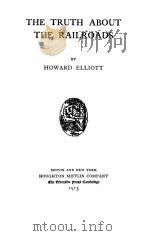
- THE TRUTH ABOUT THE RAILROADS
- 1913 HOUGHTON MIFFLIN COMPANY
-

- MANAGEMENT OF HUMAN SERVICE PROGRAMS SECOND EDITION
- 1991 BROOKS/COLE PUBLISHING COMPANY
-

- LENINISM
- 1957 FREDERICK A.PRAEGER
-
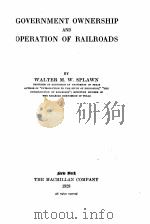
- GOVERNMENT OWNERSHIP AND OPERATION OF RAILROADS
- 1928 THE MACMILLAN COMPANY
-
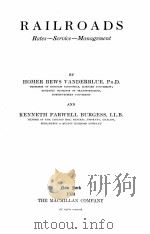
- RAILROADS RATES-SERVICE-MANAGEMENT
- 1924 THE MACMILLAN COMPANY
-

- THE PROBLEM OF WEAK RAILROADS
- 1929 UNIVERSITY OF PENNSYLVANIA PRESS
-
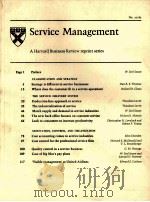
- SERVICE MANAGEMENT
- 1969
提示:百度云已更名为百度网盘(百度盘),天翼云盘、微盘下载地址……暂未提供。➥ PDF文字可复制化或转WORD





